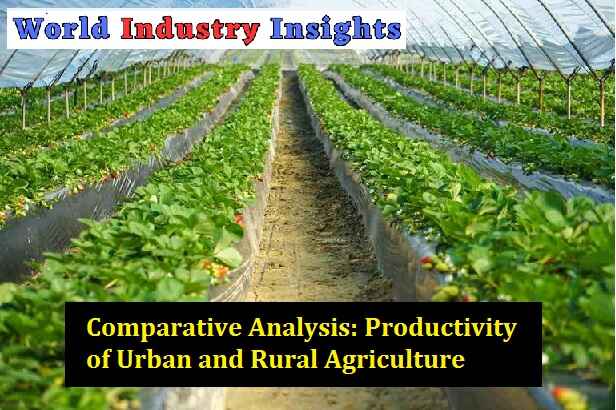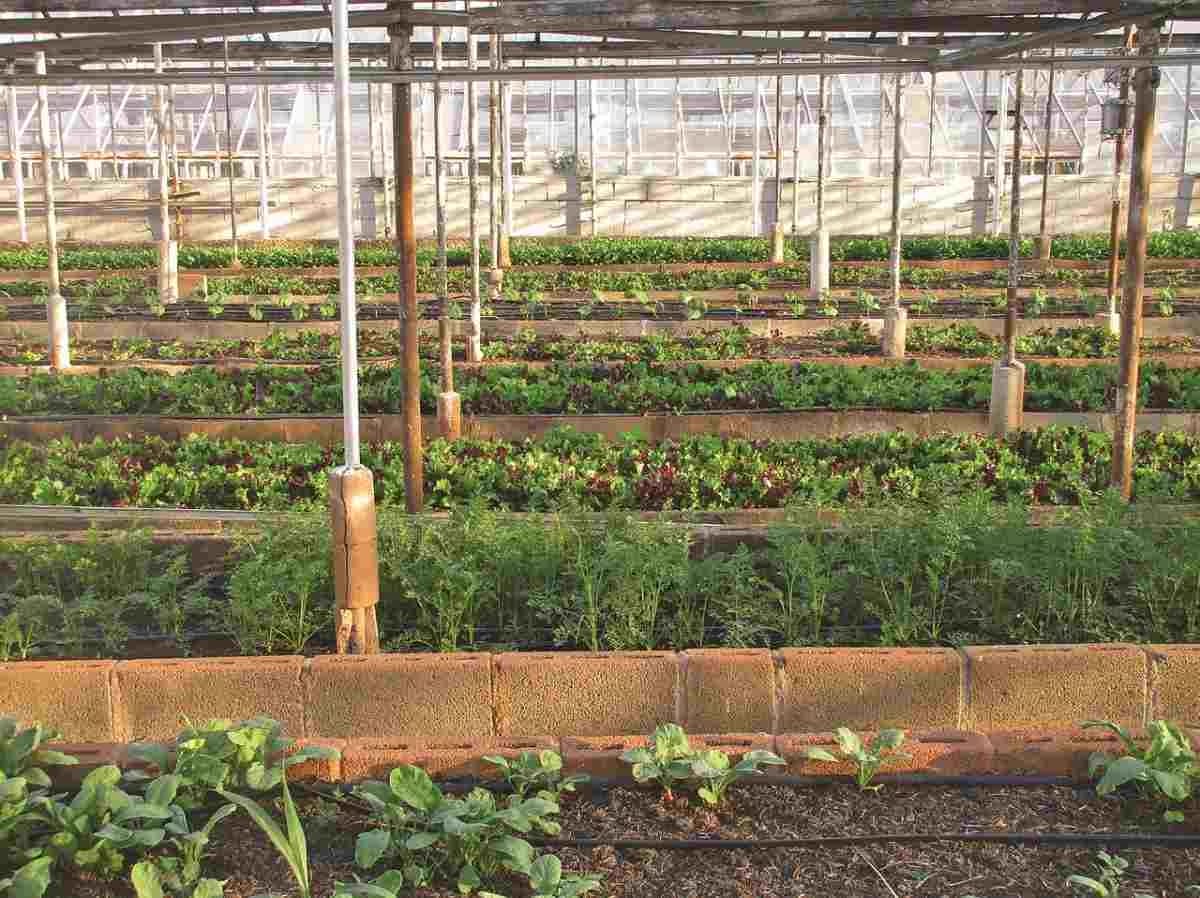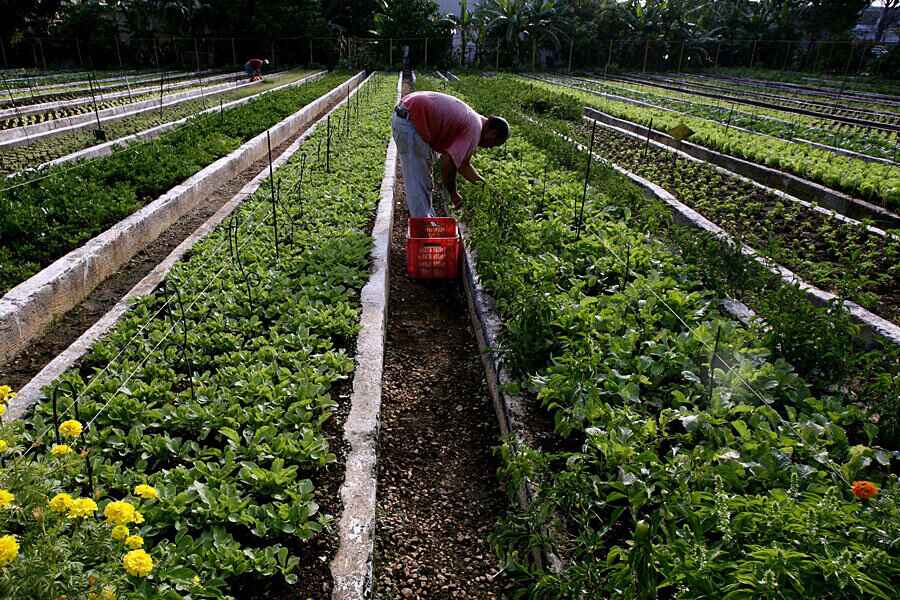Productivity of Urban and Rural Agriculture: As the world’s population continues to grow, the demands on global food production have surged. A nuanced understanding of the different urban and rural agriculture systems becomes paramount to ensure food security. This article presents a comprehensive comparison of urban and rural agriculture, two contrasting paradigms that each have a crucial role to play in shaping the future of food production.
Defining urban and rural agriculture
Urban agriculture refers to the cultivation, processing, and distribution of food within city limits. It capitalizes on available urban resources such as vacant plots, rooftops, and even vertical spaces. Rural agriculture, on the other hand, is typically associated with large-scale farming operations in open countryside areas, primarily revolving around the cultivation of food and livestock. This is the difference between urban and rural agriculture.
Importance of agriculture for food production
Agriculture remains the cornerstone of global food production. With the increasing threat of climate change and the continuous strain on natural resources, optimizing agricultural practices to meet food demand sustainably is paramount. global food production has changed dramatically in recent decades.
Overview of the comparative analysis
In this article, we delve into the advantages and challenges of both urban and rural agriculture systems. We further illustrate these points with real-world case studies from successful urban and rural agriculture models.
Advantages of Urban Agriculture
Urban agriculture offers a unique set of benefits, often facilitated by its close proximity to urban consumers and markets.
Access to Resources
Availability of land and space
While urban spaces are often densely populated, creative use of vacant lots, rooftops, and other unused areas provides a surprising amount of farming potential.
Access to water sources
Urban environments offer multiple sources of water, including municipal supplies and reclaimed water, reducing dependence on natural water bodies.
Proximity to urban markets and consumers
Being closer to consumers reduces transportation needs, resulting in fresher produce and fewer carbon emissions.
Technological Advancements
Use of innovative farming techniques
Urban farms often employ cutting-edge techniques like aquaponics, aeroponics, and precision farming, optimizing output and reducing resource waste.
Application of hydroponics and vertical farming
With hydroponics and vertical farming, urban farms can produce high yields even in compact spaces, without relying on soil fertility.
Integration of smart technologies in agriculture
Smart technologies, such as AI-powered irrigation systems and crop monitoring tools, enable urban farmers to make data-driven decisions, enhancing productivity and sustainability.
Diverse Crop Cultivation
Growing a wide range of crops
Urban agriculture promotes biodiversity by enabling the cultivation of a wide variety of crops, from leafy greens to root vegetables and fruits.
Seasonal crop cultivation
By manipulating growing conditions, urban farms can produce seasonal crops year-round, ensuring constant supply and diversity.
Specialization in high-value crops
Urban farmers can focus on high-value crops that cater to specific urban consumer demands, such as organic produce, specialty herbs, and rare edible plants.
Social and Environmental Benefits
Community engagement and education
Urban farms serve as educational platforms for city dwellers to learn about agriculture, nutrition, and the environment, fostering a sense of community.
Reduction in food miles and carbon footprint
By reducing transportation distances, urban farms lower carbon emissions and food miles, contributing to the fight against climate change.
Enhanced urban aesthetics and green spaces
Urban farms transform concrete jungles into green, vibrant landscapes, improving city aesthetics and enhancing citizens’ mental well-being.
Challenges of Urban Agriculture
Despite its benefits, urban agriculture faces several challenges that require innovative solutions and regulatory support.
Limited Space and Land Constraints
Utilizing small plots and rooftops
Limited space means that urban farms often have to resort to unconventional areas for farming, like rooftops and small plots.
Vertical farming as a space-efficient solution
Despite its promise, vertical farming requires substantial investment in infrastructure and technology making it a high-risk venture.
Overcoming zoning and regulatory challenges
Urban agriculture often faces legal obstacles due to zoning laws and building codes, demanding regulatory changes for its widespread adoption.
High Startup Costs
Initial investment in infrastructure and equipment
Urban farming requires substantial capital for setting up infrastructure, purchasing equipment, and often, for soil remediation.
Cost of acquiring land or leasing space
Urban land is expensive. Whether buying or leasing, the high cost of urban land can be prohibitive for aspiring urban farmers.
Sustainable funding models for urban farming projects
Developing sustainable business models for urban farming projects remains challenging, given the high operational costs and uncertainties in crop yield.
Soil Quality and Contamination
Dealing with soil degradation in urban areas
Urban soils are often compacted, low in organic matter, and less suitable for farming compared to rural soils.
Soil contamination and remediation strategies
Urban soils may also be contaminated by pollutants, necessitating testing and remediation before they can be used for food production.
Ensuring safe and healthy produce
Even with remediation, concerns about soil contamination can impact the perceived quality and safety of urban-grown produce.
Limited Water Resources
Water scarcity in urban environments
With growing populations and increasing demand, water scarcity is a key issue in many cities, limiting the feasibility of urban farming.
Implementing efficient irrigation systems
Developing and implementing efficient irrigation systems in urban spaces is often challenging and requires significant investment.
Exploring alternative water sources
Urban agriculture must explore alternative water sources, like greywater and rainwater harvesting, to ensure sustainability.
Advantages of Rural Agriculture
Advantages of rural agriculture, the traditional backbone of global food production, has several inherent advantages.
Abundant Land Resources
Access to larger farming areas
Rural areas offer vast expanses of land, providing the capacity for large-scale, mechanized farming practices.
Potential for expansion and scalability
The abundance of land allows for farm expansion and economies of scale, which can lead to increased production efficiency and lower costs per unit.
Preservation of rural farming traditions
Rural areas preserve traditional farming practices, which have sustained human civilizations for centuries and continue to contribute significantly to global food production.
Lower Production Costs
Reduced land and labor costs
Land and labor costs are typically lower in rural areas, making rural farming economically advantageous in many regions.
Availability of natural resources
Rural farms often have direct access to natural resources such as rivers and lakes, and are surrounded by natural biodiversity, which can contribute to farming productivity.
Economies of scale in rural farming
The large-scale nature of rural farming allows for economies of scale, which can lower production costs and enhance profitability.
Favorable Climate Conditions
Climate suitability for specific crops
Certain crops thrive best in specific rural climates and soil conditions, leading to superior yield and quality.
Natural irrigation and rainfall patterns
Rural areas often benefit from natural rainfall patterns, reducing dependence on artificial irrigation systems.
Less dependence on artificial climate control
Rural farms are less likely to rely on energy-intensive artificial climate control systems, unlike urban farms that often require such systems for indoor farming operations.
Biodiversity and Ecosystem Services
Preservation of natural habitats
Rural farming, when practiced sustainably, can help maintain and even enhance biodiversity by preserving natural habitats.
Promotion of biodiversity in rural areas
A variety of flora and fauna in rural farms can contribute to crop pollination, pest control, and soil enrichment.
Ecosystem services provided by rural agriculture
Besides food production, rural agriculture provides vital ecosystem services, including carbon sequestration, groundwater recharge, and preservation of cultural landscapes.
Challenges of Rural Agriculture
Despite its advantages, rural farming faces its own set of challenges, many of which arise from its physical distance from consumer markets and the impact of modern farming practices on the environment.
Distance to Markets
Transportation and logistics challenges
The physical distance between rural farms and urban markets introduces complexities in logistics and can increase the carbon footprint of the food supply chain.
Shelf-life considerations for perishable goods
Transport delays and longer storage times can negatively affect the quality and shelf-life of farm produce, especially perishable goods.
Market access for small-scale rural farmers
Small-scale rural farmers often struggle to access urban markets due to logistical challenges and market consolidation, affecting their profitability.
Labor Shortages
Declining interest in agricultural work
Rural areas often face a shortage of labor due to urban migration and the younger generation’s declining interest in agricultural work.
Seasonal labor requirements and availability
Farming operations often require a significant increase in labor during planting and harvesting seasons, leading to temporary labor shortages.
Mechanization and automation solutions
While mechanization and automation can mitigate labor shortages, they require significant investment and may not be feasible for small and medium-sized farms.
Environmental Impact
Deforestation and land degradation
Expansive rural farming can lead to deforestation and land degradation, threatening biodiversity and contributing to climate change.
Water pollution from agricultural runoff
Pesticides, fertilizers, and animal waste from rural farms often contaminate water bodies, leading to aquatic life degradation and threatening human health.
Sustainable farming practices in rural areas
The adoption of sustainable farming practices, such as organic farming, permaculture, and agroforestry, is essential for the long-term viability of rural agriculture.
Technology Adoption
Access to technological advancements
Many rural farmers lack access to the latest farming technologies, which can limit their productivity and ability to manage resources effectively.
Education and training for rural farmers
Rural farmers often require more training and support to adopt new technologies and practices, further complicating technology adoption.
Balancing traditional practices with modern technology
There is a delicate balance to strike between preserving traditional farming practices and adopting modern technology, as both have their place in sustainable food production.
Case Studies: Successful Urban and Rural Agriculture Models
To further illustrate the potential of both urban and rural farming systems, here are some compelling case studies from around the world.
Urban Agriculture Case Studies
The Rooftop Revolution: Urban Farming in New York City
In New York City, innovative urban farmers have transformed underutilized rooftops into productive green spaces, contributing to local food supply and enhancing city life.
Singapore’s Vertical Farms: Growing Food in the Sky
In land-scarce Singapore, high-tech vertical farms stack multiple layers of crops, optimizing space and significantly contributing to the nation’s food security.
From Vacant Lots to Vibrant Gardens: Detroit’s Urban Farming Renaissance
Detroit’s urban farming movement has turned vacant lots into vibrant gardens, bringing fresh produce to urban residents and fostering community development.
Rural Agriculture Case Studies
The Green Fields of Iowa: High-Yield Farming in Rural America
In rural Iowa, large-scale farming practices have led to high-yield production of corn and soybeans, demonstrating the efficiency of modern rural agriculture.
Sustainable Agriculture in Costa Rica’s Rural Highlands
In Costa Rica’s rural highlands, farmers have adopted sustainable farming practices that not only produce high-quality coffee but also preserve the rich biodiversity of the region.
Rice Terraces of the Philippine Cordilleras: Centuries of Rural Farming
The ancient rice terraces of the Philippine Cordilleras showcase a centuries-old system of rural farming that has sustained local communities while preserving cultural heritage and biodiversity.
Conclusion of Productivity of Urban vs Rural Agriculture
In our comparative analysis, we have observed that both urban and rural agriculture present unique advantages and face distinct challenges. Urban agriculture optimizes limited space and resources, employs advanced technology, and fosters community engagement. Simultaneously, it grapples with land and resource constraints, high startup costs, and concerns about soil and water quality.
Rural agriculture, on the other hand, benefits from abundant land resources, lower production costs, and favorable climate conditions, while contributing significantly to global biodiversity. However, it must address issues related to distance to markets, labor shortages, environmental impact, and technology adoption.
The dichotomy between urban and rural agriculture reflects the diverse global agricultural landscape. Each has a unique role in global food production and can complement the other in achieving our shared goal of sustainable food security. As we move towards the future, fostering collaboration between urban and rural agriculture communities can bring about innovative solutions that blend the best of both worlds.
FAQs Related Productivity of Urban vs Rural Agriculture
Q1. What is urban agriculture and what are its main benefits?
Urban agriculture refers to growing, processing, and distributing food within city limits, offering benefits such as reduced food miles, increased access to fresh produce, and community engagement.
Q2. How does rural agriculture contribute to global food production?
Rural agriculture, with its abundant land resources and favorable climate conditions, forms the backbone of global food
production, supplying a significant proportion of the world’s food.
Q3. What are the primary challenges faced by urban agriculture?
Key challenges in urban agriculture include limited space, high startup costs, issues related to soil quality and contamination, and water scarcity.
Q4. What issues does rural agriculture face, and how can they be addressed?
Rural agriculture faces challenges such as distance to markets, labor shortages, environmental impacts, and technology adoption, which can be addressed through sustainable practices, technology, and policies.
Q5. Can urban and rural agriculture coexist and complement each other?
Yes, urban and rural agriculture each play unique roles in food production and can complement each other, enhancing overall food security and sustainability.
Our Reader’s Queries
What is the difference between rural and urban agriculture?
Have you ever wondered about the contrast between urban and traditional farming? Urban farming, unlike traditional farming, involves cultivating food in urban areas that are small space friendly, require less water resources, have fewer food miles, use more sustainable packaging, and emit fewer GHG.
What type of agriculture is performed in an urban societies?
Urban agriculture encompasses a variety of activities, such as community gardens, urban farms, and orchards. It involves growing a range of produce, including vegetables, fruits, herbs, and spices, for sale in local markets. Additionally, it may involve raising livestock, such as chickens, and keeping bees. Urban agriculture can also include cultivating non-food crops, like flowers, for landscaping and other purposes.
What is urbanization in agriculture?
Urban agriculture refers to the practice of cultivating crops and raising small livestock or milk cows in small areas within the city, such as vacant plots, gardens, balconies, and containers. This practice can serve as a source of food and income for urban residents, as they can consume the produce themselves or sell it in local markets.
What is urban agriculture and how can it impact a local food system?
Urban agriculture plays a crucial role in building a sustainable food system. It helps in localizing food economies and enhancing climate resilience. By utilizing unused land in cities, urban agriculture reduces the need for rural agriculture and minimizes the amount of land required for food production. This not only promotes self-sufficiency but also ensures that fresh produce is readily available to urban dwellers. With its numerous benefits, urban agriculture is a viable solution to the challenges of food security and environmental sustainability.



